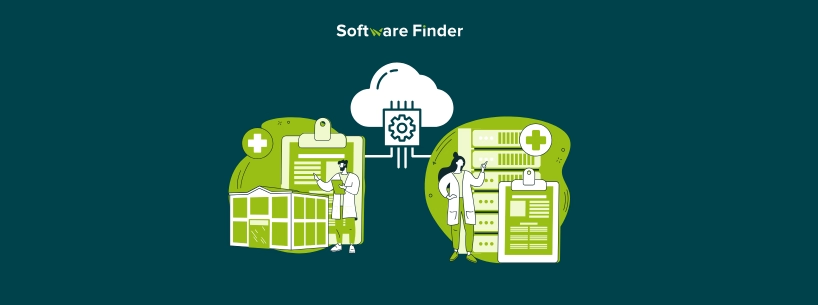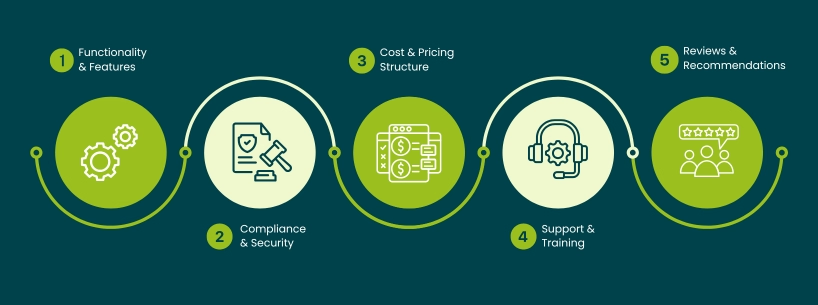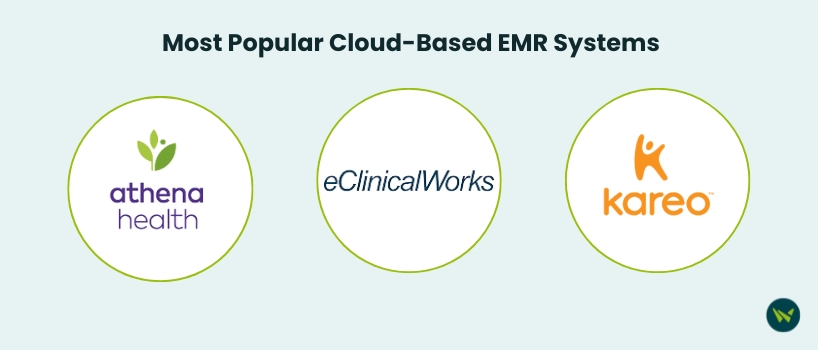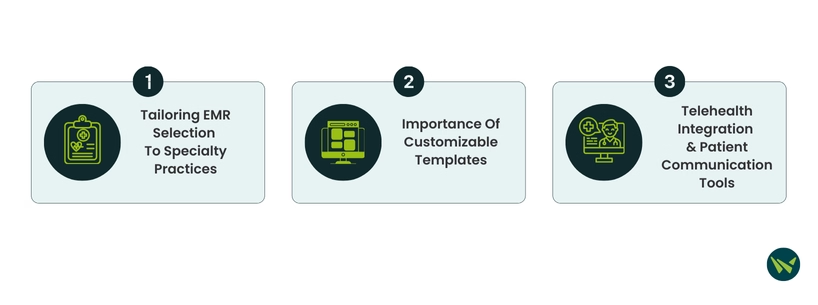
As healthcare shifts toward digital solutions, cloud-based EMRs are increasingly favored for their accessibility and scalability. These systems are hosted on remote servers rather than on local servers within a medical practice, allowing healthcare providers to access patient records from anywhere with an internet connection. Cloud-based EMRs help achieve greater flexibility and collaboration. Additionally, they offer advanced encryption and data backup solutions to protect sensitive patient information.
However, it can be challenging to choose the right cloud-based EMR with so many options available. This guide will walk you through key factors to consider when evaluating cloud-based EMRs, which will help you find a solution aligned with your practice’s needs.

When evaluating various cloud-based EMR options, it's essential to consider the following key features that can improve patient care and support your practice.
Functionality And Features
Look for the systems that can integrate with your existing tools, such as billing software and practice management systems. It minimizes data entry errors and ensures a smoother workflow.
Similarly, mobile accessibility is also critical to manage patient information and access records on-the-go. This feature enhances patient engagement by allowing quick responses to inquiries or care plan adjustments from anywhere.
Compliance And Security
When we talk about laws governing healthcare technology, regulatory compliance, such HIPAA is non-negotiable. You need to verify that the software regularly undergoes security audits to protect patient data and maintain confidentiality.
Also, a reliable system should offer automatic backups and have a comprehensive disaster recovery plan to ensure that patient data is secure and retrievable in case of system failures or cyberattacks.
Cost And Pricing Structure
Search for transparent pricing models that clearly outline monthly fees, potential costs based on usage, and any percentage of collections. Beyond the initial subscription fee, assess any additional implementation costs. This may include data migration, customization, and training for staff.
Support And Training
Track down vendors that provide 24/7 support and consider the training resources available for your staff. A comprehensive training program can make the transition to a new EMR smoother and faster.
Reviews And Recommendations
Recommendations can be invaluable when selecting an EMR. Pay attention to both positive and negative feedback, as this can provide a balanced view of what to expect.
Moreover, if you're feeling overwhelmed by the options, consider consulting with experts or hiring healthcare IT consultants who can provide guidance based on your practice’s specific needs.

With so many EMR options available, it can be difficult to decide where to begin. To help simplify the decision, let’s look at some of the most popular cloud-based EMR systems:
After the selection, successful implementation is also important to prevent disruptions to patient care and daily operations. Several factors can influence the speed of implementation, such as the scale of data migration required or complexity of your current system.
That said, look for an EMR vendor that provides a structured implementation roadmap, including a clear timeline to prevent system downtime. Consider starting with a soft rollout, where specific departments or functions are transitioned first. This gradual approach allows staff to adapt to the new system in stages.

Every medical specialty has unique workflows and patient care requirements that can influence which EMR system will best support its operations.
Here are some key factors to consider:
Your decision in selecting the best cloud EMR solutions is more than a technology choice; it’s an investment in efficiency, patient satisfaction, and growth of your practice. A carefully selected cloud-based EMR is a strategic asset that can strengthen patient engagement and support clinical outcomes.
Investing time in vendor comparisons, user recommendations, and feature evaluations will ensure that your chosen EMR aligns with the specific needs of your practice. The right solution helps your practice meet today’s healthcare demands and prepares you for future opportunities, so you can focus on delivering better care.
